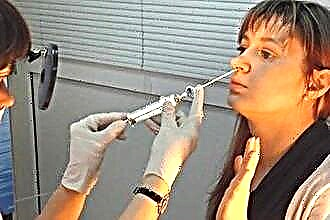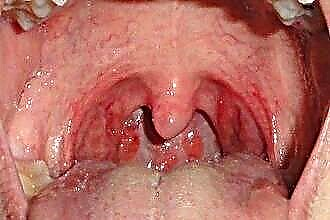During pregnancy, many women deliberately refuse pharmaceutical preparations, fearing that the chemicals in their composition may harm the unborn child. But if a runny nose occurs, you cannot tolerate its manifestations, avoiding treatment. Difficulty in nasal breathing is not such a harmless symptom; nasal congestion impairs the supply of oxygen to the body and affects not only the woman, but also the child. Folk remedies for the common cold during pregnancy are very popular because they are considered safer than pharmacological drugs. How true is this, how to choose the right home remedy?
What can be used
 The variety of recipes offered by traditional medicine for the treatment of rhinitis is very large. But not all of them are suitable for women who are expecting a baby. Meanwhile, it is necessary to start therapy as soon as the first symptoms appear - you should not wait until the condition worsens. At the same time, it is worth knowing that it is recommended to treat rhinitis during pregnancy with folk remedies only in case of a cold. There are no home remedies that can cope with vasomotor rhinitis of pregnancy or allergic rhinitis.
The variety of recipes offered by traditional medicine for the treatment of rhinitis is very large. But not all of them are suitable for women who are expecting a baby. Meanwhile, it is necessary to start therapy as soon as the first symptoms appear - you should not wait until the condition worsens. At the same time, it is worth knowing that it is recommended to treat rhinitis during pregnancy with folk remedies only in case of a cold. There are no home remedies that can cope with vasomotor rhinitis of pregnancy or allergic rhinitis.
What folk remedies are considered useful for a cold? These include home remedies based on:
- aloe;
- Kalanchoe;
- carrots;
- olive oil;
- table salt.
Traditional medicine has recipes for both topical and oral administration. However, it must be remembered that even a medicine prepared at home does not guarantee the absence of side effects. In addition, the result may appear too late. Therefore, you should be careful, listen to your own feelings during use.
The lack of improvement in the condition after a day of treatment with folk remedies requires a mandatory visit to a doctor.
Aloe and Kalanchoe
Treatment of a runny nose during pregnancy at home is very convenient, especially if the components of the folk remedy are at hand. Aloe and Kalanchoe are houseplants that are very often used to relieve rhinitis. How to use them and is it safe?
Aloe tree-like, otherwise called agave, is used in the treatment of colds, pathologies of the digestive and urinary systems. The sap of the plant is the main ingredient in nasal drops. It is diluted with boiled water in a 1: 1 ratio and injected into the nasal cavity 3 drops several times a day.
Kalanchoe juice, unlike aloe juice, cannot be used immediately. It is necessary to prepare plant raw materials:
- trim the fleshy leaves;
- wash and dry them;
- wrap with a clean cloth or cellophane;
- grind, place in the refrigerator;
- after 2 days, squeeze and strain the juice.
The resulting juice is mixed with boiled water in equal proportions, injected into the nose 3 times a day. Before using, it is worth knowing that undiluted aloe and Kalanchoe juice can cause severe irritation and even burn the mucous membrane.

Aloe for a cold during pregnancy can be applied exclusively topically, in the form of drops or to lubricate the mucous membrane - and only with the permission of a doctor.
Pregnancy is one of the absolute contraindications for treatment with aloe and Kalanchoe. Therefore, you should not risk your own health and the health of the child by using homemade tinctures or decoctions based on these plants. In addition, quite often it is recommended to add alcohol to the juice, and this component certainly cannot be consumed by the expectant mother.
The safest topical use is in the form of drops. But even in this case, a woman should be aware of the risk of developing an allergic reaction - for example, Kalanchoe from a runny nose during pregnancy can worsen edema, itching, and difficulty breathing. In addition, the juice of aloe and Kalanchoe causes severe sneezing, the attacks of which can adversely affect the condition of the expectant mother.
What else do you need to know about treating aloe during pregnancy? This plant is used in folk medicine if an admixture of pus appears in the discharge from the nose. However, such a symptom may indicate both the terminating rhinitis and the developing sinusitis. In the first case, you do not need to further irritate the mucous membrane, and in the second, folk remedies are not enough - antibiotics will be required, which the doctor will select individually.
Carrot, apple, olive oil
Treating a common cold during pregnancy can be done with carrots, apples, or olive oil. What recipes based on them are useful for pregnant women?
- Fresh carrot juice.
It does not have to be mixed with other ingredients. It is enough to wash and peel the carrots, squeeze the juice and lubricate the nostrils with it several times during the day. For each repeated procedure, you need to prepare the carrots again.
- Carrots and olive oil.
Take freshly squeezed carrot juice and mix with an equal amount of olive oil. Drops are obtained that are best introduced into the nose by means of lubrication rather than instillation. You can use a cotton swab or narrow cotton swab to do this.
- Apple juice.
An apple can also serve in the fight against a runny nose - it must be washed, peeled, squeezed and filtered the juice. Lubricate the mucous membrane with juice using a cotton swab.
So that folk remedies for the common cold for pregnant women work properly, rinse your nose with saline before lubricating the mucous membrane or inserting tampons.
Vegetable and fruit juices, like olive oil, cannot clear up the infection. They are used as restorative agents. Medicines that contain oil prevent the nasal mucosa from drying out.
Salt
Saline can be used for a pregnant woman to treat a runny nose at home. This product is sold in a pharmacy (0.9% sodium chloride solution, Aqua Maris, Physiomer) or it is prepared independently. Would need:
- boiled water (cooled to room temperature) - 1 liter;
- table salt without impurities (preferably finely ground) - 1 teaspoon.
Combine the ingredients in a clean bowl. Take a small syringe (or, as it is often called, a medical pear), fill it with the remedy. If you don't have a syringe at hand, a syringe without a needle will do. Then follow several sequential steps:
- Lean over a container where the solution will be poured along with mucus (for example, over a bathtub).
- Insert the tip into the right or left nostril without scratching the mucous membrane.
- Gently, without undue pressure, let the solution into the nose - it should pour out through the second nostril, it can partially get into the mouth.
- Flush both nostrils in turn.
The temperature of the solution for rinsing the nose during pregnancy should be close to the body temperature.
Lack of flushing is the risk of developing otitis media. The procedure is performed if you can breathe through your nose, albeit with difficulty - and there is a lot of mucus that needs to be removed. However, if the nasal cavity is literally clogged with secretions, severe swelling is observed, the additional pressure created by the syringe and liquid can lead to infected mucus entering the auditory tube. Therefore, in no case should you rinse a completely stuffy nose, complications are much more dangerous than a cold. In this case, there are two ways:
- abandon rinsing altogether, inject the solution into the nose only in the form of drops;
- use a local vasoconstrictor before flushing.
Since vasoconstrictors are pharmacological drugs that women are trying to avoid using traditional medicines, this method is not suitable for everyone. In addition, the likelihood of the presence of hypertrophy of the mucous membrane, polypous growths cannot be ruled out - in this case, it is better to exclude washing.
To make the treatment of rhinitis during pregnancy in case of a cold safe, it is best to discuss the use of alternative recipes with your doctor. The development of complications of the common cold will not do without the appointment of pharmacological drugs. In addition, it is not always easy to distinguish a cold from a non-infectious one, which requires a completely different therapeutic approach.

 So that folk remedies for the common cold for pregnant women work properly, rinse your nose with saline before lubricating the mucous membrane or inserting tampons.
So that folk remedies for the common cold for pregnant women work properly, rinse your nose with saline before lubricating the mucous membrane or inserting tampons.

